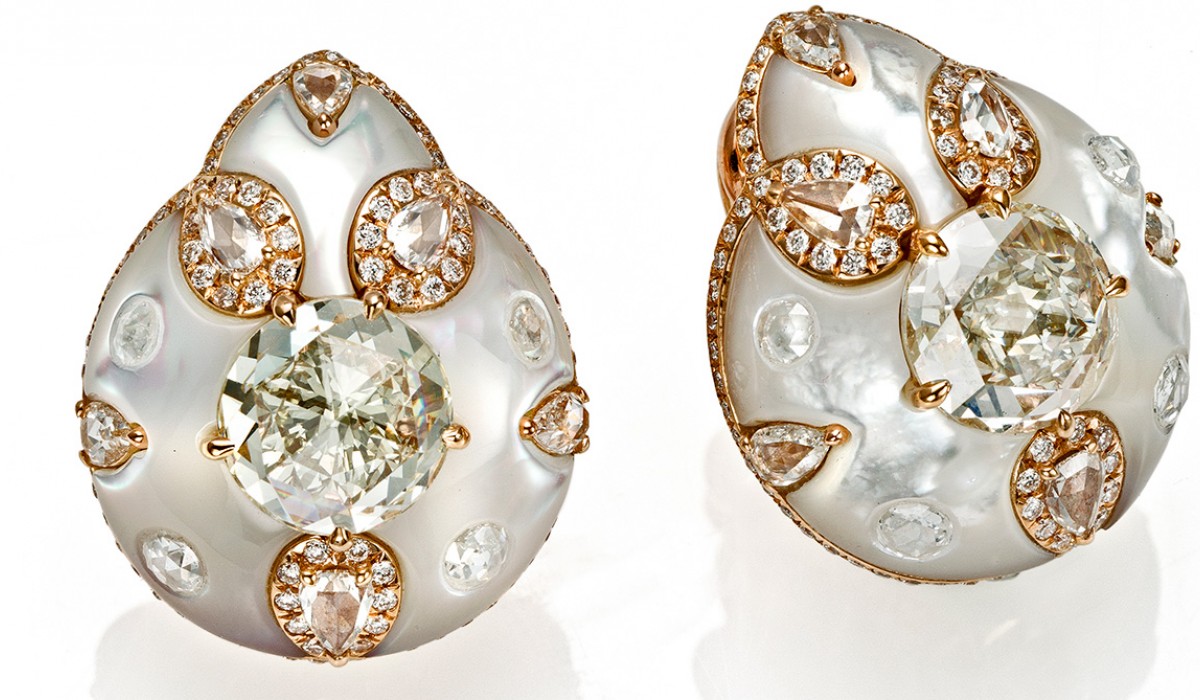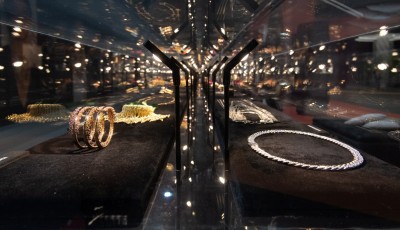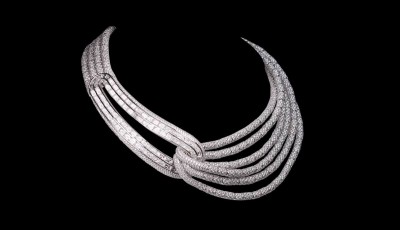Metamorphosis of pearls and new ways of fashioning them
Text Katerina Perez
Pearls, in spite of their apparent simplicity, are incredibly “alive”. With a myriad of natural colour and iridescence, as well as an internal shimmer and a variety of form, pearls have always been considered a gift from the gods, and for many centuries they have been available in Europe, as in the East, only to the elite.
In recent decades, the jewellery industry has greatly changed the vision of this mineral: former inaccessibility has been replaced by an abundance due to the production of cultured pearls, which in turn has led to producers to experiment on the familiar spherical form, with unexpected and fantastical results. And that’s exactly what I’ll be investigating in this article.Faceted Pearls
In 1910, Peter Carl Fabergé predicted the popularity of faceted pearls. What was once a joke in passing has been put into practice, successfully, some 70 years later by the Japanese factory Komatsu Diamond Industry which used to specialise in cutting diamonds. Nowadays the company facets freshwater pearls and its specialists successfully operate in China and Australia. There are also exclusive exhibitions with original cuts by the man recognised as the undisputed world leader in this area, Viktor Tuzlukov. Striving for absolute symmetry, Viktor has already cut around 20 pearls, most of which have become part of Ilgiz Fazulzyanov’s jewellery (including those referred to by Gokhran Russia and the Kremlin Museum as the best examples of contemporary jewellery), though two are kept as part of private collections in America.
Drilled pearls
We all know the necklace. Needless to say, to fit around a single thread the pearls must be drilled. And what happens if this is done in multiple places? The interior comes out in a dusty form, but the surface and the many openings become similar or varying in diameter. Thanks to this technology, a light, delicate and yet strong look is achieved, which is highly effective in jewellery. This is exactly what Melanie Georgacopoulos did in her collection, “Invention”, which she created for the Japanese brand Tasaki.
Sliced Pearls
Some people are not to interested by the external as the are by the depth of things, into which they strive to enter. So in her search to understand how pearls form, Melanie Georgacopoulos cut the minerals. Her simple curiosity gave way to the idea of updating the way people think of pearls, making them contemporary and relevant. As a result, two unique collections were designed, once more in collaboration with Tasaki: Legacy with sliced pearls covered in gold and pavé diamonds, and Mystic with slice pearls, which has no precious metals or stones.
Stones in Pearls
Not too long ago, jewellers began to use a complex technique of a “stone within a stone” with pearls, implanting diamonds and precious stones into pearls. However, few succeeded because of the rather capricious and fragile nature of this particular marine mineral. The jewellery house Boghossian has best mastered this technique, producing pieces where the implanted gems fit perfectly into the pearl, thus creating a beautiful duet where the mysterious, flickering, frosted pearl plays against the piercing sparkles of light from its jewelled edes. The same technique also works successfully for the jewellery house Mikimoto, which specialises in pearls, as well as for independent designers including Italian jewellery maestro Davide Maule.
Nature has created an amazing material for jewellery in pearls, but human thought has taken it a step further. And something tells me that master designers and stone-cutters have more in store for us yet.
[gallery size="medium" link="file" ids="13903,13905,13906,13907,13908,13909,13910"]
[su_divider top="no" size="1" margin="5"]
The Author








